In Club Guy & Roni’s show, the audience got to choose how the story was going to end, which was an unprecedented freedom given to me as a spectator. By integrating the online game to their offline performance, the company had adapted the work to today’s pandemic circumstances, offering a unique performance-watching experience that at first felt unusual but was also liberating.
Due to the pandemic regulations, only a limited number of people could take part in the offline version—watching the show live and in person. For these audiences, director Guy Weizman stated, “We are creating waves of public where people enter in a new room for each act every thirty-five minutes.” As I live outside of the Netherlands, I was only able to attend the online game, the version that people from all over the world could take part with an internet connection.
The original Swan Lake is a four-act ballet, which follows the story of Prince Siegfried who, forced by his mother to choose a bride, ends up falling in love with a beautiful young woman, Odette, who is under a spell by the evil sorcerer Rothbart that transforms her into a swan during daylight. The spell can only be broken if somebody swears to love Odette forever, and while Siegfried and Odette fall in love, he is later tricked into announcing he will marry Rothbart’s daughter, Odile. Realizing his mistake, he runs to the lake to see Odette and although Odette forgives him, the spell cannot be undone. Odette and Siegfried decide to die together by jumping in the lake—though, as mentioned, this ending has been interpreted differently by different productions.
By integrating the online game to their offline performance, the company had adapted the work to today’s pandemic circumstances, offering a unique performance-watching experience that at first felt unusual but was also liberating.
Club Guy & Roni’s adaptation consisted of three acts as opposed to Tchaikovsky’s four. The acts did not strictly follow the storyline of the original work, so the piece almost felt like an independent performance inspired by the original Swan Lake, which focused on telling Odette the swan’s story. In each act, a different actor would play the swan, and both the online and offline spectators were given the freedom of choosing who they wanted to see perform. The offline spectators would enter various rooms where they could watch the performer they chose while the online spectators did the same from virtual rooms. For the swan character in the first act, the audience members were presented with three actors to choose from, who would each execute a similar—but probably not the same—performance.
My first swan choice to play Odette was Igor Podsiadly, a permanent member of Club Guy & Roni who is originally from Poland. During his performance, Igor’s naked body created a cold, raw atmosphere while also reminding the audience of the unclothed and simple nature of the protagonist. With perfect acting, Igor portrayed the lonely innocent swan under the spell of the evil sorcerer. Simple and instinct-driven, Igor’s performance transcended my expectations. The setting of this act was an empty, dark room with a low level of water on the ground that splashed with Igor’s movements to give a more dramatic feeling to the performance. The online version of this act was offered in 3D, and although my computer did not have the system to support that, this offering would have added extra reality and sensation to the act.
At the end of act 1, we online spectators took a quick image test to find out what type of a swan we were. Under the directive to “act, not think,” we had one minute to choose between a number of pairs of images—three seconds per pair—that stood for opposite ideas, like individual vs. community, history vs. future. I found out I was an adventurous swan—quite accurate for a minute-long image-picking test, I should say.
After this, we entered another virtual room where we could watch the second act by another swan of our choice. This time, I went with the actor Tatiana Matveeva to play Odette. With more dynamic movements compared to that of Igor in the first act, Tatiana transformed the swan’s agitation in this part of the story very well. Here, Odette was watched and approached by two antagonists who seemed to be portraying Siegfried and another sorcerer. Because of this tension, we saw a more defensive version of the swan, anxious while trying to keep the watchers away.
At the end of Tatiana’s performance, I was surprised by how choosing a different actor to play the swan had affected me as an audience member, because I hadn’t thought it would matter that much at first. When Tatiana started performing after Igor, it felt a bit weird, almost alienating. I realized I was very much used to seeing one actor perform a character throughout the whole show, getting to know their face, their body language, their voice. Nonetheless, at the end of Tatiana’s amazing performance, I realized that, in fact, I gained a new vision in performance watching. Getting to choose the actor gave me such a freedom as a spectator and made me feel very included. I later thought watching the same person, with the same dancing style, perform would have felt one-dimensional.
In the third act, the scene opened in a white room that was overcrowded with stage props. My actor/dancer of choice this time was Sanne den Hartogh, who portrayed Siegfried. He was waiting by Odette, portrayed by Jesula Toussaint Visser, who was laying unconsciously on the ground, apparently killed by the sorcerers. Here, Sanne portrayed a delusional character, stressed and confused by all the junk surrounding him, which he tried to make use of to entertain himself.
The work overall raised my awareness about the possibilities of production when it comes to extreme circumstances such as the global pandemic.
Act 3 was interrupted when the screen changed and, as promised, the audience was asked to pick the type of ending they wanted to see. We were given a poll with the choices for a “forward” or a “backward” ending. These seemed to be “happy” and “sad” endings but we, as the audience, were not going to find this out until we saw the performance end. I voted for the forward ending, which is what had a higher number of votes, so a forward ending to the story was going to be performed. In the end, to portray the “resurrection” of the swan, Jesula got off the ground and took a seat next to a pianist, who only appeared in the frame after the camera angle changed with Jesula’s moving. It turned out that the forward ending was a happy ending on Odette’s side. The pianist started playing and Sanne, portraying Siegfried, gave one final lonely and naked dance performance to crown the ending. Odette, having been the main dancer and focus of the show until then, watched Siegfried dance.
The adaptation, as a ballet performance with highly theatrical qualities, was reflective of the pandemic-driven world we are living in today in several ways. Through the first, second, and third acts, we saw the characters gradually going from calm, instinctual, and emotional movements (act 1) to more nervous and defensive ones (act 2), and eventually to more confused and anxious ones (act 3). The changes in the settings were similar: there was a gradual crowding of the space, going from almost an empty room (act 1) to a room with a metal platform and two antagonists (act 2) and eventually a crowded room that was jam-packed with all sorts of irrelevant stuff that seemed excessive, perplexing, and superficial (act 3). It was a metaphor for how people have gradually drifted away from their simpler lives, ending up in today’s overcrowded, superfluous, and pandemic-stricken anxious society.
As an international company that aims to contribute to the evolution of the discipline of dance, Club Guy & Roni preserved and presented an innovative show that pushed the boundaries of traditional performance-watching. The work overall raised my awareness about the possibilities of production when it comes to extreme circumstances such as the global pandemic.


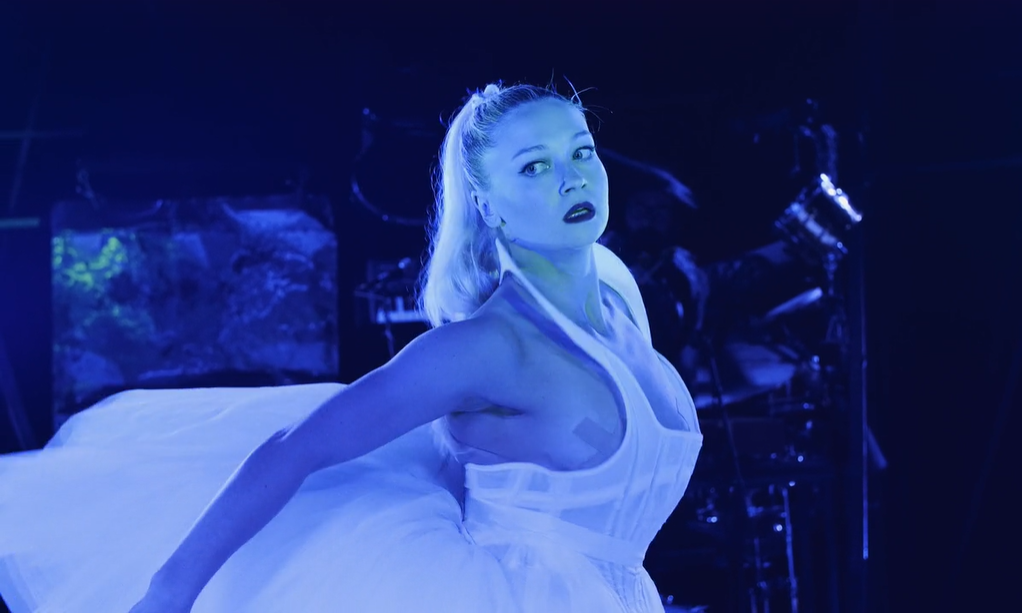
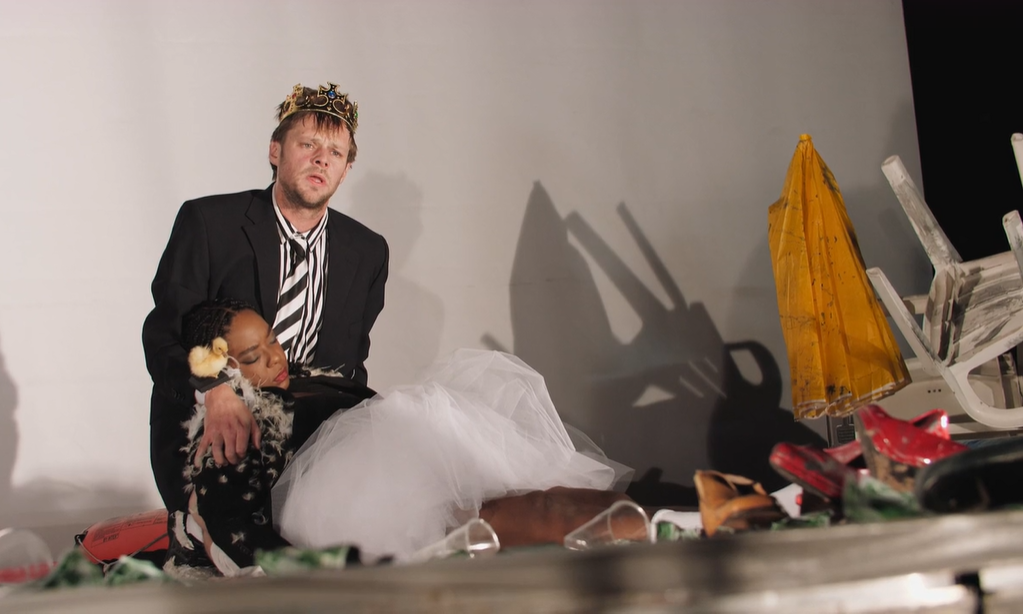
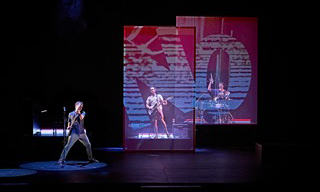

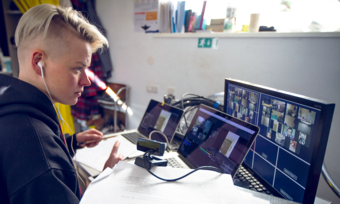

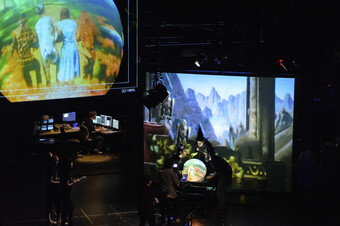

Comments
The article is just the start of the conversation—we want to know what you think about this subject, too! HowlRound is a space for knowledge-sharing, and we welcome spirited, thoughtful, and on-topic dialogue. Find our full comments policy here